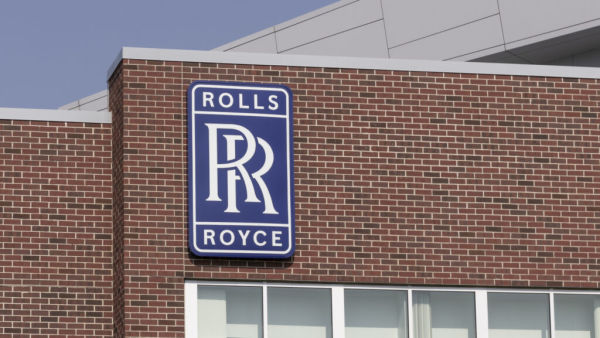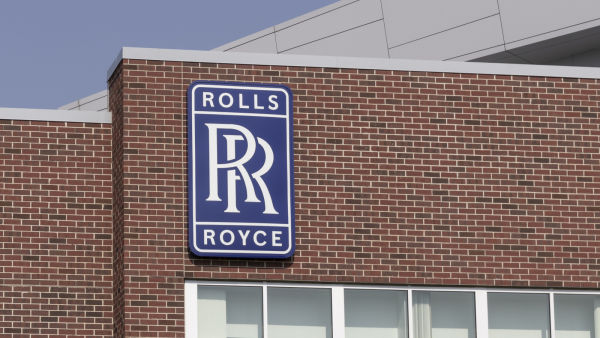The name Rolls-Royce will likely evoke a selection of specific adjectives in the mind of most. “Luxury,” for one. “Opulent” is another. And, unless you’re one of the very, very lucky few, “unattainable” is probably up there too. The Rolls-Royce Spectre and Cullinan Series II, for example, are picture-perfect examples of the otherworldly class and refinement the brand brings to the table. For $500,000 of your hard-earned dollars, it’s the least you’d expect.
However, more products are made under the Rolls-Royce name than these (admittedly impressive) passenger vehicles. And while not all of them are quite as luxurious or classy as the cars, they’re hardly more attainable, often the preserve of armies and huge corporations. You see, there currently are two Rolls-Royces: the one that makes the cars is Rolls-Royce Motor Cars, which has been a BMW brand since 2003. The other is Rolls-Royce Holdings, which traces its roots back to 1906 and once counted the motorcar division under its umbrella, but is now a wholly separate company from the BMW-owned operation — that’s the Rolls-Royce we’re focused on here.
Rolls-Royce Holdings manufactures serious, megabucks hardware for defense and civil aerospace markets, with a notable presence in power generation and energy storage markets. It’s a whole other world compared to the cars, and you may be surprised by some of the distinctly unglamorous — but no less impressive — hardware that bears the Rolls-Royce name.
Submarine propulsion systems
$500,000 for a Rolls-Royce Spectre is nothing compared to some of the vehicles — for lack of a better term — that Rolls-Royce Holdings’ products power. We don’t have exact numbers, but the British government set aside a cool 31 billion pounds (a little over $42 billion) to build just four of its upcoming Dreadnought submarines.
Rolls-Royce has powered British nuclear submarines since the Royal Navy’s Valiant-class submarines from 1966, all the way to its Vanguard-class submarines, which are still some of the most advanced nuclear submarines in the world, despite launching all the way back in 1994 as part of the country’s Trident nuclear deterrent program. The Dreadnought submarines, set to begin prowling the seas in the early 2030s, continue this tradition. All four Dreadnought vessels will use Rolls-Royce’s Pressurised Water Reactor 3 (PWR 3), which is the successor to the PWR 2 reactor present in the Vanguard submarines. So crucial is the company’s role in the U.K.’s nuclear submarine program that Rolls-Royce signed a roughly 9-billion-pound deal with the U.K. Ministry of Defence (MoD) earlier in 2025.
Rolls-Royce is also part of the Dreadnought Alliance, which brings together the three organizations responsible for the Royal Navy’s new submarines: Rolls-Royce, which provides propulsion; BAE systems, tasked with building the actual subs; and the Submarine Delivery Agency (part of the MoD), which handles the acquisition and disposal of all the country’s undersea vessels.
Marine and naval engines
Rolls-Royce engines aren’t just a fixture under the sea; they’re also present in vessels that operate on the surface of the world’s oceans. Whether it’s for military, commercial, or leisure purposes, Rolls-Royce — and its mtu Solutions subsidiary — likely has a suitable offering in its product portfolio.
Let’s start with mtu Solutions, which came under the Rolls-Royce umbrella back in 2011. The Germany-based company makes a hybrid power system for yachts called the mtu Hybrid PropulsionPack. The hybrid systems combine mtu’s 2000 or 4000 diesel engines with dual electric drivetrain systems. Rolls-Royce claims that an mtu Series 2000 setup, for example, can offer up to 4818 kW worth of energy from its hybrid system and reduce fuel consumption by 10% — for a simulated four-day cruise, at least. Rolls-Royce and mtu aren’t just relying on hybrid power to cut emissions, either; the Series 2000 and 4000 engines are expected to be certified for use with alternative fuels such as biomass-to-liquid (BtL), hydrotreated vegetable oil (HVO), and power-to-liquid (PtL), making maritime propulsion just that little bit more sustainable.
Other, less eco-friendly power solutions from Rolls-Royce include its MT30 gas turbines, which are the primary engines in many types of modern warships. These include vessels such as Canada’s upcoming River-class destroyers and South Korea’s Ulsan-class frigates. Similarly, mtu’s Series 8000 engines power the Polish navy’s Miecznik frigates. The Canadian and Korean vessels also use other Rolls-Royce products, such as the Series 4000 diesel generators.
Aircraft engines
We go from the sea to the air and what is likely Rolls-Royce Holdings’ most well-known endeavor: airplane engines. The original Rolls-Royce company’s Eagle VIII V12 engine from the 1910s powered WWI-era aircraft such as the Sopwith Atlantic and Blackburn Blackbird, and that lineage. continues to this day. Rolls-Royce-powered fighter planes such as the Panavia Tornado continue to feature in aerial combat situations.
As with its sea-going engines, however, Rolls-Royce doesn’t just make military plane engines. It also has a strong presence in civil aviation, with the company producing a large family of Trent jet engines that power many commercial aircraft. In fact, in 2014 Rolls-Royce ranked as the second-largest manufacturer of commercial jet engines, and it was in the top four of aircraft engine manufacturers in general as of 2020.
Rolls-Royce’s current lineup of Trent commercial jet engines includes the Trent 7000, a relatively new engine that debuted in 2019 to power Airbus’ A330neo airliner, and the Trent XWB, which was designed and optimized for the Airbus A350. Unfortunately for Rolls-Royce, its civil aircraft engines haven’t necessarily had the best time of late: the firm’s Trent 1000 was plagued by issues in the late 2010s, while the Airbus A330neo’s Trent 7000s have been criticized for allegedly underperforming. Despite that, Rolls-Royce has continued to find buyers for its engines, recently signing contracts to deliver 142 engines — including 40 Trent 7000s — to airlines such as Saudi Arabia’s Riyadh Air, Taiwan’s Starlux Airlines, and Vietnam’s Vietjet Air.
Power generators
Given Rolls-Royce’s expertise in maritime diesel generators, it’s likely not going to be much of a surprise that it has a hand in making stationary power generation and storage products. The company makes a wide range of solutions here, with some coming once again from its mtu Solutions subsidiary.
Mtu makes gas and diesel gensets capable of operating at both 50 and 60 Hz, with power outputs ranging from 27 kWe at the low end to 3,250 kWe at the top of the range. Diesel generators are the ones covering both ends of this spectrum, with mtu’s natural gas or biogas-capable generators sitting in the 2,500 kWe range. The company’s biogas gensets are targeted toward more rural contexts — livestock, farming, and agriculture, for example — while its diesel power plants serve as backup or standby generators for data centers, nursing homes, and even airports like Tulsa International Airport.
Clients who want to free themselves from a country’s national electricity grid can also turn to Rolls-Royce, as the company has enough products in its portfolio to set up microgrids. These use renewable energy sources, combined with Rolls-Royce’s battery energy storage systems, to create localized power grids that ensure a facility or community has constant electricity, even when the national grid faces disruptions. Rolls-Royce also produces industrial-scale, battery-free UPS systems — once again, via mtu Solutions — to round out its power generation and storage offerings.
Nuclear micro-reactor
Rolls-Royce isn’t content to have a presence on land, sea, and in the air. The company is also targeting outer space with a nuclear micro-reactor, which it first announced in 2023 and has yet to come to fruition. So no, it’s technically not a “product” — but can you blame us for including it?
Anyway, Rolls-Royce’s space-bound power source is a 10-foot micro-reactor capable of generating between 1 and 10 megawatts of power. The firm claims that the uranium-powered reactor will be highly power-dense, with the design able to provide power and heat for all sorts of equipment while still remaining portable. While the project’s primary goal is to go into space — Rolls-Royce intends to have the micro-reactor’s first orbital test before 2030 — its compact size means that it could offer clean energy in remote, off-the-grid locations. The world’s militaries may also benefit, as the reactor could be used to keep the lights on at forward operating bases in hostile war zones.
The project had enough potential to convince the U.K. Space Agency to invest roughly $6 million in 2024 to help Rolls-Royce reach its targets, develop the whole system, and eventually launch a demonstration in space. As of March 2025, the company was actively seeking partnerships to help put its micro-reactor on the moon. Only time will tell whether Rolls-Royce can achieve its lofty spacefaring ambitions, but it’s certainly an endeavor to keep an eye on — and one that could change the way we generate power forever.






